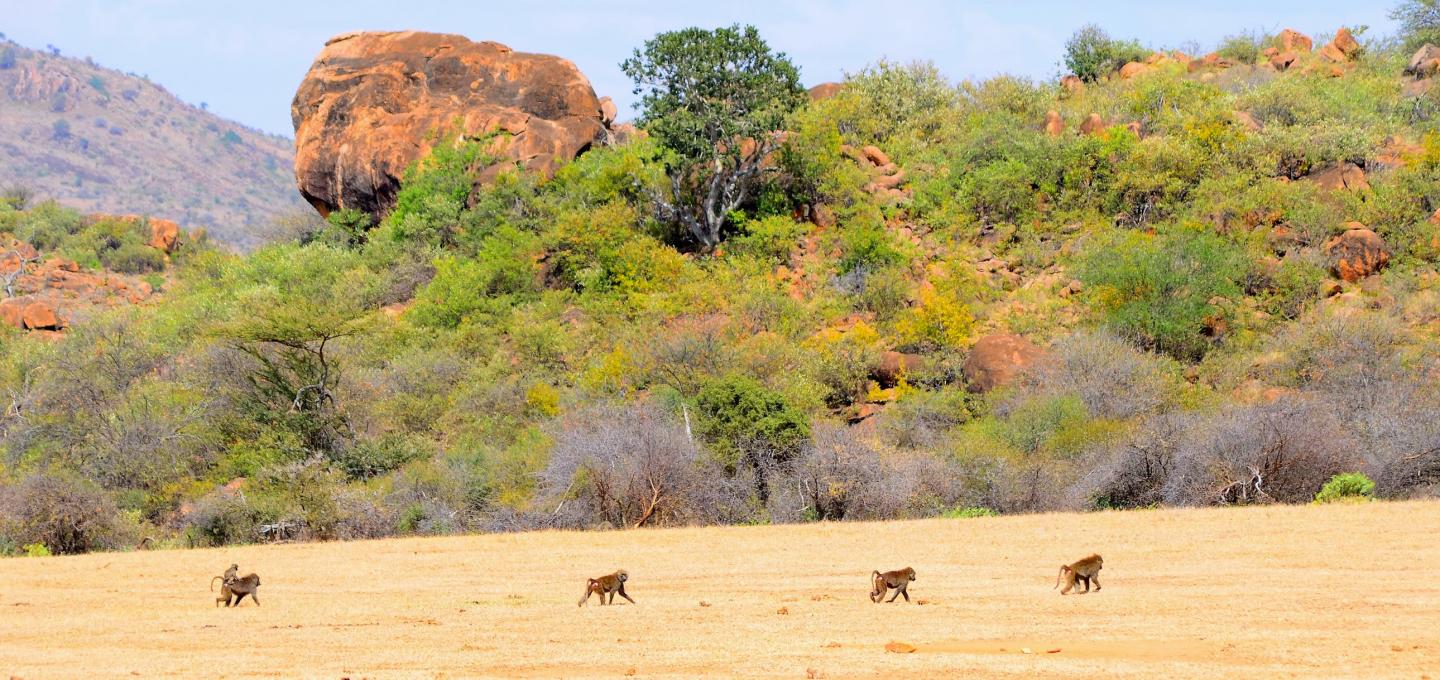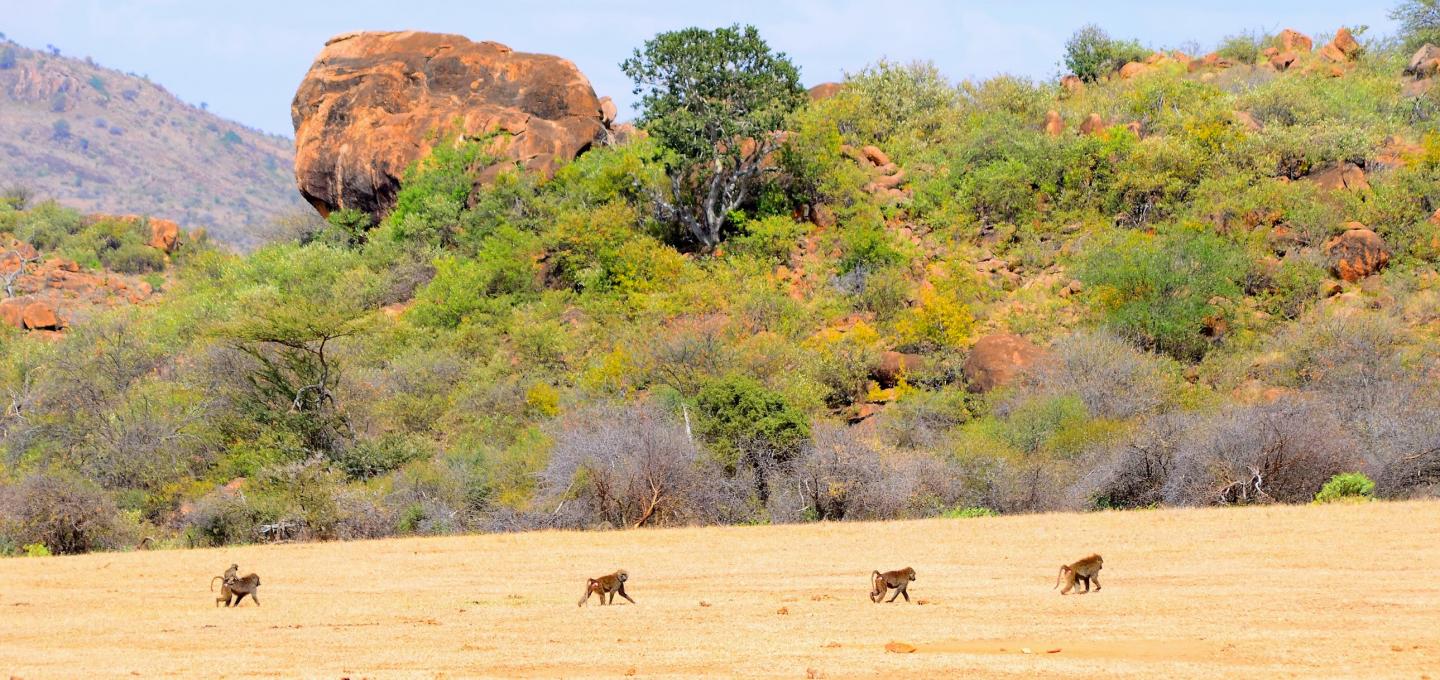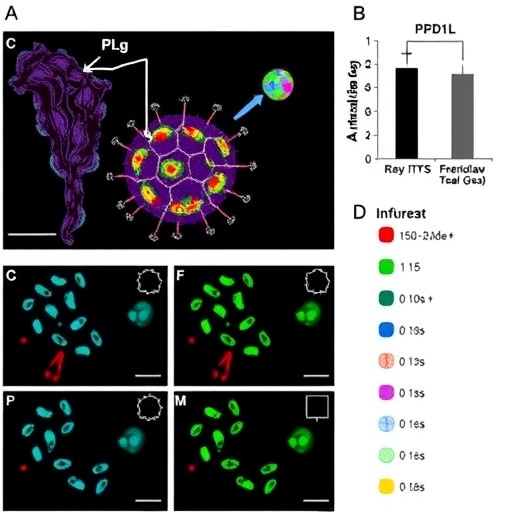
Credit: Strandburg-Peshkin et al.
When deciding what path to take during collective movement, individual baboons will likely follow the road most travelled by their group mates, according to new findings published in eLife.
The study also suggests that environmental factors, such as roads and the vegetation density of their habitat, play a key role in how baboons move together as a group.
To investigate this behaviour, researchers from the US and Germany tracked 25 wild olive baboons belonging to a single troop with second-by-second global positioning system (GPS) tracking at the Mpala Research Centre in Laikipia, Kenya. They also used drone-based imaging technology to provide a high-resolution, three-dimensional reconstruction of the physical and vegetation structure of the baboons' environment. The data were then combined with a modelling system to help predict the animals' steps.
These methods reveal for the first time how the habitats of baboons and the animals' social interactions (in particular their tendency to follow each other closely) combine to influence the movements of individuals in a troop and ultimately determine the overall group structure.
They show that the most important predictor of baboons' decisions about where to move is where other troop members have gone in the recent past – specifically, within the last five minutes. The more baboons have walked through a certain spot in this time, the more attractive it is to individuals.
"We also found that baboons tend to use man-made roads and, to a lesser degree, animal paths, allowing them to effectively 'commute' to and from their group's sleeping site," says first author Ariana Strandburg-Peshkin, PhD, from the Department of Ecology and Evolutionary Biology at Princeton University, but now located at the Max Planck Institute for Ornithology in Radolfzell, Germany.
"The animals' movements are also constrained by habitat features such as vegetation density in the area. In particularly dense environments, for example, the troop moves slower and individuals become less aligned in their direction of travel, showing how local environmental complexity can impact the overall structure and motion of groups."
The study highlights the importance of combining habitat and social features for understanding animal movement at both the individual and group level, which Strandburg-Peshkin says is a "crucial step" in predicting how changing environments might affect social animals.
Senior author Professor Iain Couzin, from the Department of Collective Behaviour at the Max Planck Institute for Ornithology, and the University of Konstanz, adds: "While our work illustrates the insights that can be gained from technologies such as drone-based remote imaging and GPS tracking, we were limited to a relatively short period of data collection mainly due to the equipment's limited battery life.
"An exciting future direction would be to conduct longer-term or repeated sampling of animal groups across the year to capture changing environmental conditions, such as very wet or very dry weather. This would allow us to investigate with even more accuracy how these changes impact individual decisions and group-level structures."
###
Reference
The paper 'Habitat and social factors shape individual decisions and emergent group structure during baboon collective movement' can be freely accessed online at http://dx.doi.org/10.7554/eLife.19505. Contents, including text, figures, and data, are free to reuse under a CC BY 4.0 license.
Media contact
Emily Packer, eLife
[email protected] 01223 855373
About eLife
eLife is a unique collaboration between the funders and practitioners of research to improve the way important research is selected, presented, and shared. eLife publishes outstanding works across the life sciences and biomedicine — from basic biological research to applied, translational, and clinical studies. All papers are selected by active scientists in the research community. Decisions and responses are agreed by the reviewers and consolidated by the Reviewing Editor into a single, clear set of instructions for authors, removing the need for laborious cycles of revision and allowing authors to publish their findings quickly. eLife is supported by the Howard Hughes Medical Institute, the Max Planck Society, and the Wellcome Trust. Learn more at elifesciences.org.
Media Contact
Emily Packer
[email protected]
01-223-855-373
@elife
http://www.elifesciences.org





